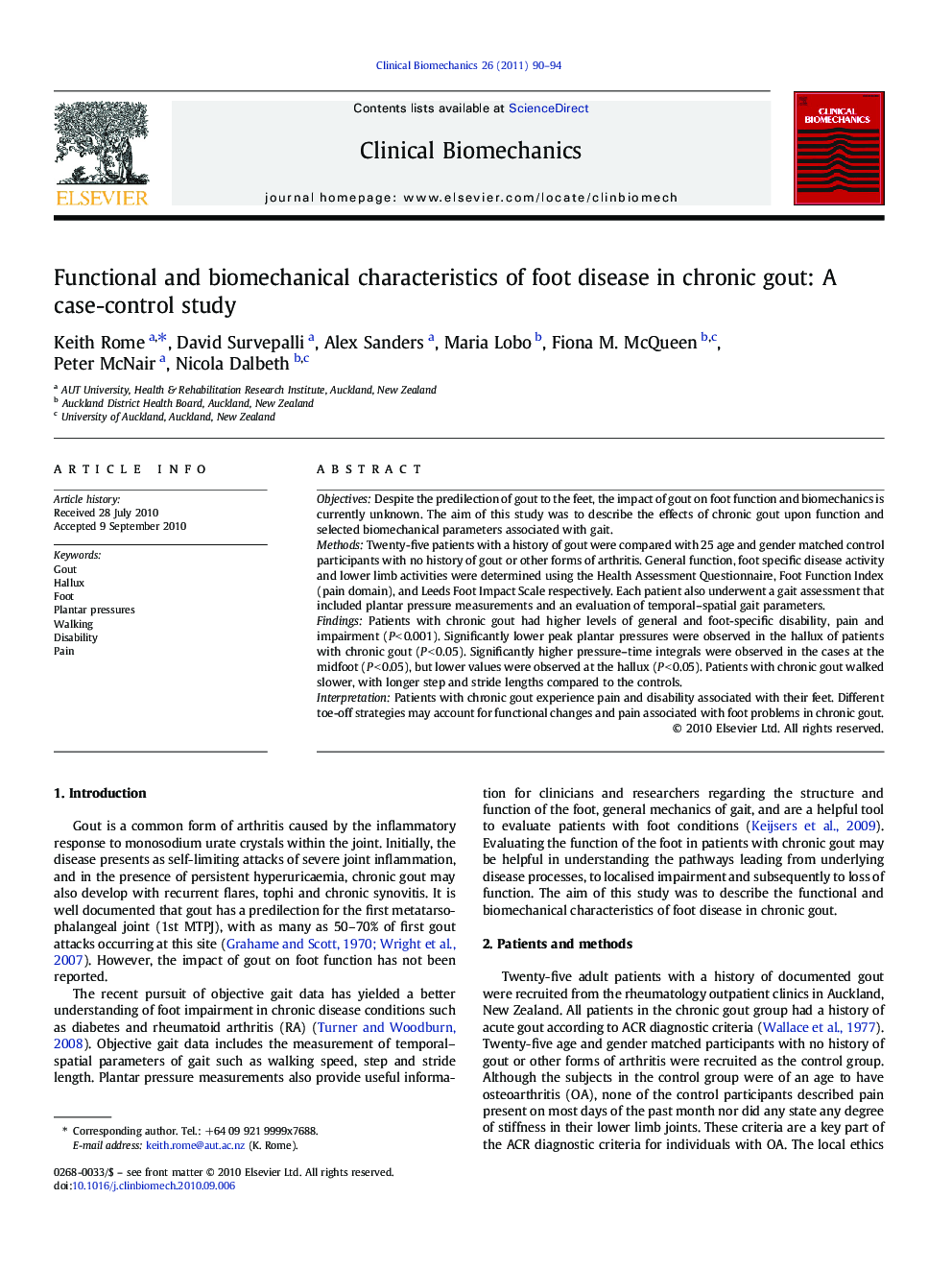| Article ID | Journal | Published Year | Pages | File Type |
|---|---|---|---|---|
| 4051011 | Clinical Biomechanics | 2011 | 5 Pages |
ObjectivesDespite the predilection of gout to the feet, the impact of gout on foot function and biomechanics is currently unknown. The aim of this study was to describe the effects of chronic gout upon function and selected biomechanical parameters associated with gait.MethodsTwenty-five patients with a history of gout were compared with 25 age and gender matched control participants with no history of gout or other forms of arthritis. General function, foot specific disease activity and lower limb activities were determined using the Health Assessment Questionnaire, Foot Function Index (pain domain), and Leeds Foot Impact Scale respectively. Each patient also underwent a gait assessment that included plantar pressure measurements and an evaluation of temporal–spatial gait parameters.FindingsPatients with chronic gout had higher levels of general and foot-specific disability, pain and impairment (P ≤ 0.001). Significantly lower peak plantar pressures were observed in the hallux of patients with chronic gout (P ≤ 0.05). Significantly higher pressure–time integrals were observed in the cases at the midfoot (P ≤ 0.05), but lower values were observed at the hallux (P ≤ 0.05). Patients with chronic gout walked slower, with longer step and stride lengths compared to the controls.InterpretationPatients with chronic gout experience pain and disability associated with their feet. Different toe-off strategies may account for functional changes and pain associated with foot problems in chronic gout.
